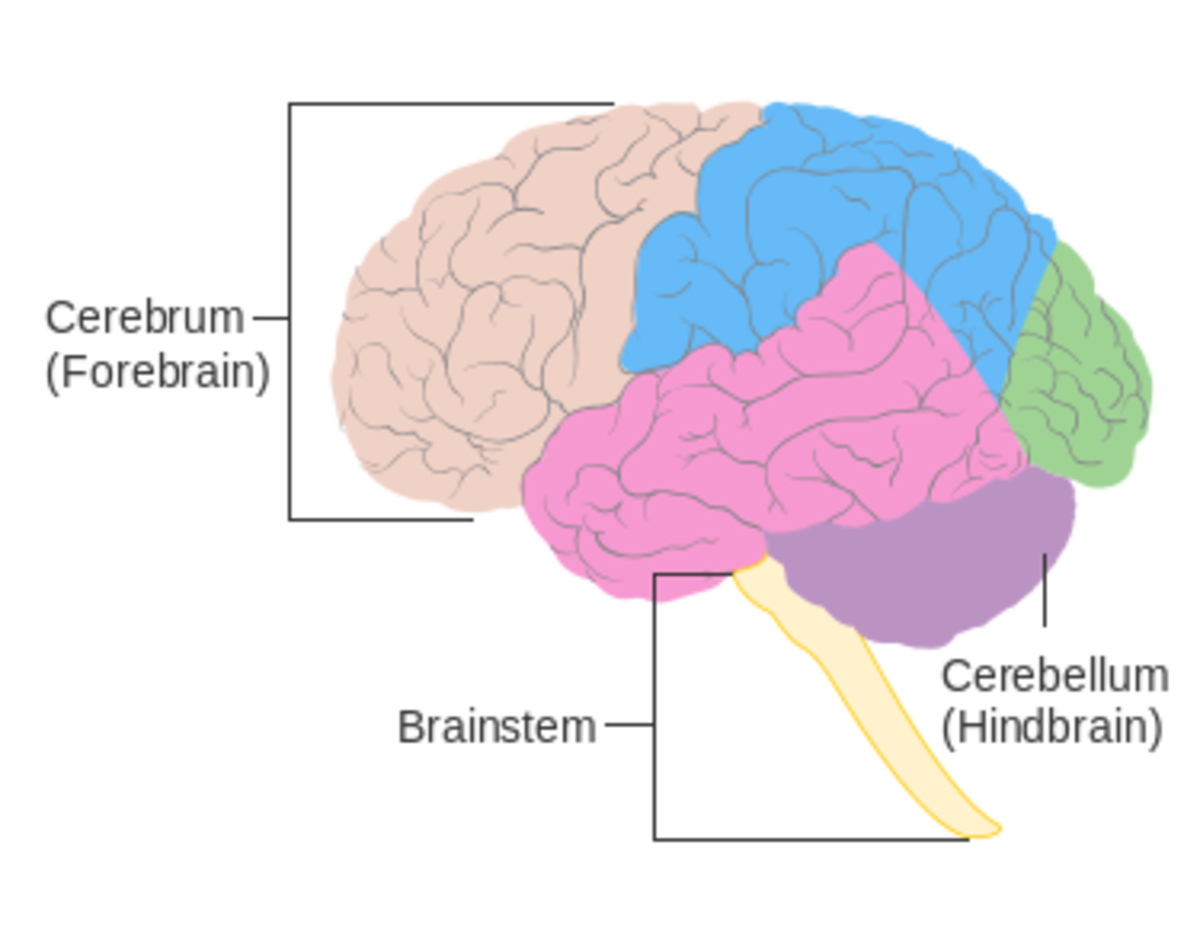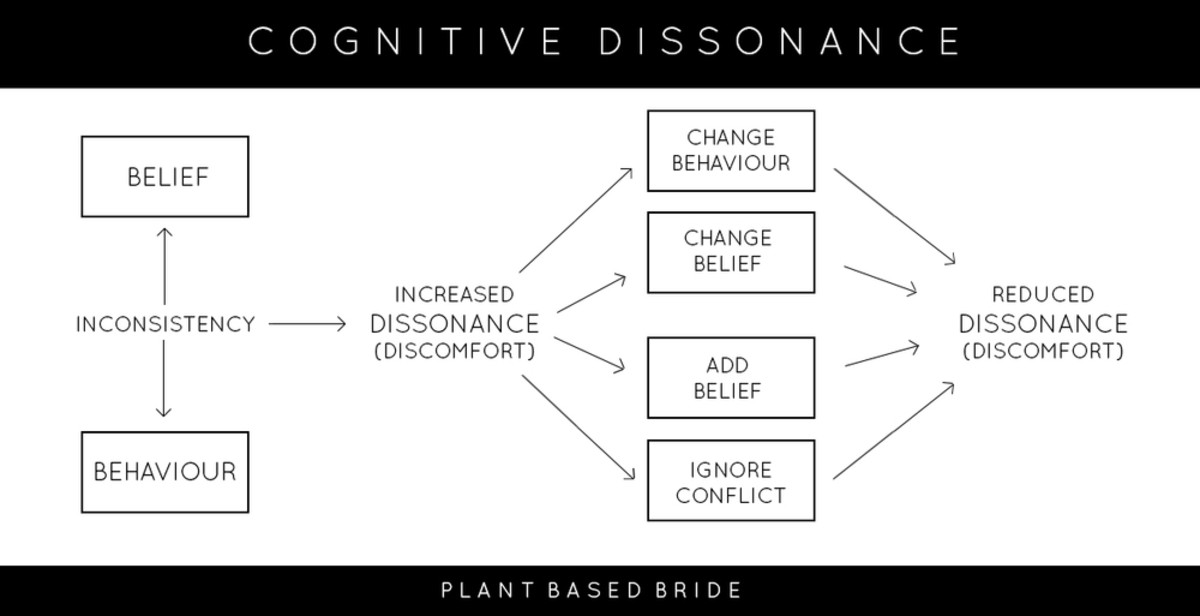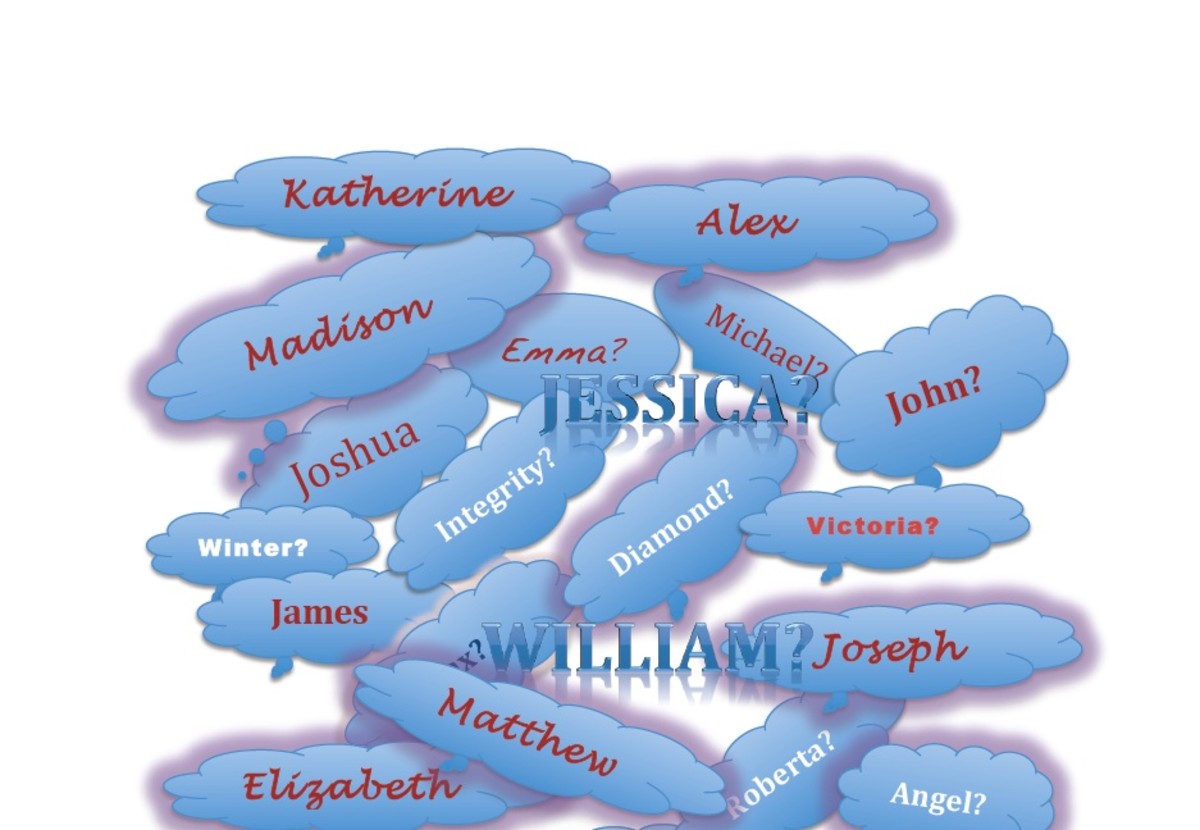Hard Problems, Binding Problems, and the Perceiving Brain

Hard Problems, Binding Problems, and the Perceiving Brain
“We do not err because truth is difficult to see. It is visible at a glance. We err because this is more comfortable.” –Alexander Solzhenitsyn
The human brain and the mind conceived from its coordination with the human body seems to be an aspect of what one might consider consciousness. The way the human organism perceives reality, also, might be a vital aspect of that which could be considered consciousness. Contrastingly, there is that which seems to have produced what we call the ‘human organism’ –actual reality, and that which the human organism perceives as reality –perceptual reality. The interplay between these two realities can be distinguished by calling the actual reality actuality, and the perceptual reality perceptuality.
The way the human organism perceives its reality is what it means to be aware. The ways in which the human organism cannot perceive its reality is what it means to be unaware. The German philosopher Immanuel Kant touched on this subject with his transcendental idealism. He compared and contrasted the phenomenal and noumenal aspects of consciousness (Rao, 2002, p.122). The noemenal state, according to Kant’s theory, is the aspect of consciousness reality that is unknowable. The phenomenal state is the aspect of consciousness reality that is knowable.
From these basic precepts it stands to reason that a human organism, perceiving its own reality from its own personal awareness (perceptuality), is going to have conceptions of that reality that may or may not coincide with what is actually happening. Even in the sense that other people, or even all other people, might agree with what the observer concludes as being real. This is because all people have brains and perceive reality in very similar ways. Because of this inherent similarity that we all share in perceiving the world around us, there can be no doubt that we all must be coming to conclusions about the world, the universe, and reality that may not take into account all that is happening.
It is true that none of us are perfect. It is true that our science is not perfect. It is definitely true that our brains are fallible. It is because of this fallibility that there must be a clear understanding why there are aspects of reality that cannot be perceived directly, lest we assume too much and allow for superfluity.
The finite-bias principle was coined by the author for exactly this purpose: to show that the human brain perceiving reality is limited due to its own bias to finitude and the requisite fallibility that follows from such a limited perception of an infinite reality.
Some of the ways in which scientists have attempted to explain the limits of the perceiving brain is apparent in Robert Feynmann’s QED, Steven Pinker’s Surface Perception Module (Pinker, 1997), neurologist V. S. Ramachandran’s concept of the God Spot in the human brain (Zohar, 2001, p. 11), Wolf Singer’s Binding Problem (Singer, 1995), and Francis Crick’s 40 Hertz Hypothesis (Crick, 1990).
Feynmann’s QED (Quantum Electrodynamics) is an example of the human brain attempting to measure an aspect of reality at the quantum level. The diagrams that were derived from the data are one of the most shocking things about the way the human organism attempts to measure an aspect of what it terms as reality. If his calculations are correct the universe itself is indeed infinite.
He came to his conclusions while studying particles moving through space and time. By drawing world-lines of electrons traveling back and forth in time he came to the brilliant conclusion that the lines he was drawing were, in all actuality, the same line! This meant that all electrons were identical (Stewart, 2003, p.231). It only seems like there are billions of electrons because our brains take snap shots of the universe, and those snap-shots can only digest the infinite electron into finite increments through what we call space-time. But what does this mean? It means that the universe is infinite. And it means that we perceive an infinite universe with finite faculties.
Feynmann’s conclusion explains infinity through electrons because that is what he was measuring to begin with. We can choose to label it anything we want to. The author has come to his conclusions from a psychological/consciousness basis, whereas Feynmann came to his from a physics basis. The author has used psychological terminology to explain his conclusions while Feynmann used physics terminology to explain his. It makes perfect sense. It matters not the field one chooses to study. If one attempts to break their particular field down to its absolutes and then checks and rechecks the data, one will always come to a conclusion that reality is infinite. This statement could be the author’s ultimate faux pas, but it is the only conclusion that truly integrates Godel’s incompleteness theorem, Shrodinger’s equation, and Heisenberg’s uncertainty principle, with the rest of the applied sciences (Deutsch, 1997, p. 60).
Heisenberg’s uncertainty principle is yet another scientific idea that shows how the human brain, and the tools derived from it, is limited when attempting to measure fundamental aspects of reality. “The uncertainty principle states that you cannot make measurements with infinite accuracy, such as measuring the velocity and position of an electron. No matter how sensitive your instruments are, there will always be uncertainty in your measurements. If you know an electron’s velocity you cannot know its precise location; if you know its location you cannot know its velocity” (Kaku, 2004, p. 101). This, explained using the finite-bias principle, is because the human brain cannot fathom infinity. One may be able to fathom the concept of infinity but one may never be able to fathom infinity itself. If one could do so then one could know both the location and velocity of any electron, but, because of the brain’s bias to finitude, one cannot.
So why can’t the human brain know both the location and velocity of an electron? It is because the human brain is an objectifying organ. It takes a finite amount of data from the infinite reality that it is a part of and molds this data into objects, such as electrons.
Wolf Singer’s binding problem explains it perfectly. It shows that there is a neural process in the brain devoted to unifying experience, a binding of memory that brings meaning to experiences. When measuring the brain’s perception of an object it is found that neurons in the brain oscillate in unison, at a frequency between 35 Hz and 45 Hz, localizing the object in depth, solidity, and color (Zohar, 2001, p. 60).
Furthermore, on the same subject, Francis Crick explains how when perceiving an object it is not so much that we are visualizing separate aspects of the object but that we are visualizing it all at once in a total coherent event. He explains that there must be some connection between the pre-frontal cortex and visual cortex of the brain that is binding everything together, and that this is a function of consciousness (Crick, 1990; Llinas et al, 1998).
These neural correlates to consciousness, and the way the brain perceives reality, are important because it is quite possible that these neural correlates produce not only sensual perception (i.e. taste, touch, smell, hearing, and sight) but non-sensory feelings such as feelings of comfort, or fear, or love, or feelings of meaning (Baars and McGovern, 2000). Furthermore, it has been hypothesized that feelings of comfort and meaningfulness originate in the dorsolateral prefrontal cortex (Vogeley, Kurthen, Falkai, and Maier, 1999).
Taking into consideration the binding problems, the Feynmann diagrams, Heisenberg’s Uncertainty Principle, and the neural correlates to consciousness one can see why one cannot know both the velocity and location of an electron, because the subjective brain is designed to perceive objectively. Objectifying such a thing as an electron makes it impossible to know its velocity because the electron itself is infinite just as all things are infinite, and the human brain can only perceive things in finite packages. This is the power of Heisenberg’s uncertainty principle, touching even upon consciousness itself!
So why does the brain automatically assume things to be a certain way? Why should we assume that an electron is an electron and not simply a phenomenon connected with all things, and thereby irrelevant? Because evolution has hard-wired into the human brain the urge to bring meaning to perception. Meaning comes from objectivity. There is no meaning in infinity, because everything is everything, but there is meaning within finitude, because things are what they are (I am me. You are you). The data that is not processed by the brain is considered to be superfluous, in the sense that it cannot bring meaning to our own existence. It is considered superfluous because the brain assumes, through conditioning and years of evolution, that the world is designed a certain way. This assumption is the essence of our bias to finitude and is explained perfectly by Steven Pinker’s Surface Perception Module (Pinker, 1997).
This module takes into account how the brain makes up for any missing information on the perception of reality. It explains how the brain ‘assumes’ the reality it is living in. It also seems to synergize all that has been discussed, especially the binding problems and the hypothesis for the neural origins of meaning in the prefrontal cortex.
How the brain perceives reality has had a profound effect on how one might go about defining consciousness. Contrastingly, quantum mechanics has had a dramatic effect; mostly in the field of computation, but also in the fields of evolution, and etymology. Little has been mentioned about the way it affects the nature of consciousness and the field of psychology. There are such concepts as Schrodinger’s equation, Heisenberg’s uncertainty principle, Godel’s incompleteness theorem, and Bertrand Russell’s conclusion on the fallacy of observational proof (Deutsch, 1997, p. 60), which indirectly touch on the effects of quantum theory on consciousness, but little has been discussed about the direct effects.
So, what do we know for certain? We know that we exist, at least perceptually. We know that our perceptions are limited due to our brain’s fallibility and its bias to finitude. We know that there are aspects of reality that we cannot perceive directly, but can perceive indirectly through experimentation. And, from all of this, we know that we will most likely be wrong due to our own fallibility. So where does this leave us in the grand scheme of things? At the risk of sounding cryptic, it leaves us completely in the dark! However, there is something to gain from all of this. We must be harder on ourselves and take nothing for granted, not even our most basic theories, not even our coveted laws, for they could all be steering us in the wrong direction. We must literally question everything, beginning with the way we perceive reality.
If the nature of reality is indeed infinite, and if our brains are bias to finitude, thereby creating the dynamic paradox that is consciousness, how might such knowledge influence the way we interact with our environment? How might our emotions regarding certain aspects of reality (i.e., ourselves, life, death) change? Before such knowledge one could comfortably imagine oneself as a finite being living and breathing in a nice little finite world all neatly packaged with beginnings and endings. But after such knowledge one realizes that things are not so simple, that things are only perceptually finite; that reality may not have the beginnings and endings that it once appeared to have had. Such knowledge should create a great amount of discomfort. Indeed, if taken seriously, such knowledge should create such a profound shift of one’s world view that a very powerful cognitive dissonance could arise.
Leon Festinger’s theory of Cognitive Dissonance is one of the best known explanations for why people believe what they are conditioned to believe rather than to believe in what has been proven to them. This ties in directly with the way the brain processes knowledge. Anybody attempting to understand Copernicus’ revolutionary theory of planetary movement, at the time, surely must have suffered from cognitive dissonance. Holding both the view that the earth is the center of the solar system as well as the view that the sun is the center of the universe creates an anxiety of sorts, whereby one escapes the discomfort by denying the scarier newer knowledge for the safer conventional knowledge. Festinger himself wrote, on the subject of cognitive dissonance, “The psychological opposition of irreconcilable ideas held simultaneously by one individual, creates a motivating force that leads, under proper conditions, to the adjustment of ones belief to fit one’s behavior - instead of changing one’s behavior to fit one’s belief” (Festinger, 1957, p. 863). It is this desperate defense mechanism that keeps people sane. Indeed, even hardened scientists, having lived their entire lives with a certain belief, suffer from this psychological defense mechanism when approached with a theory, or theories, that challenge their own coveted theories. Better to be wrong and thought of as right, than to be right and thought of as wrong, or so they must conclude. Meanwhile, the whole of science seems to suffer.
It is just such cognitive dissonance that we must not allow to influence us when we attempt to understand these new challenging theories. Belief has no place in science. Faith belongs in religion and spirituality. Science is based upon providing and disproving theories, not adherence and belief in theories. We cannot tell that the earth moves, and yet it does! We cannot tell that the Earth is a sphere, and yet it is! We cannot tell that time is an illusion, and yet it is! Conversely, we cannot tell that there are multiple universes, and yet there are (Kaku, 2005)! Should we allow ourselves to be like those who disregarded Copernicus’ theories, or Einstein’s? Or should we take these new theories into consideration, no matter how much they disturb us, and question them with open minds so that we may improve upon them, and upon our science?
Consciousness viewed in this light casts a shadow upon preconceived notions of what such basic phenomena as light, matter, and time actually are. If consciousness is indeed simply a paradox derived from a finite organ (the brain) perceiving an infinite system (reality), then perceptual reality is only a sliver of the actual totality of reality, and the universe is only a sliver of the actual totality of the multiverse. One is either humbled by such knowledge or suffering from an extreme denial derived from one’s own cognitive dissonance. It is up to scientists to be open-minded and to question such phenomena, and not to falter by succumbing to denial or cognitive dissonance. Science, in the author’s opinion, is the art of proving things wrong so that new conclusions might be proven wrong in the future. It is the act of questioning, so as to question some more.
Perception is everything. The human brain perceiving its environment is reality. So why does all of this infinite/finite mumbo-jumbo make a difference? It makes a difference because scientists must question everything, especially their own science. It’s their job. Brian Greene (2004) discussing the understanding of relativity and quantum theory said it nicely, “Newton’s flawed conception of absolute space and time works wonderfully well at the slow speeds and moderate gravity we encounter in daily life, so our senses are under no evolutionary pressure to develop relativistic acumen. Deep awareness and true understanding therefore require that we diligently use our intellect to fill in the gaps left by our senses” (p. 77). Indeed, it is up to us to fill in the gaps left, not only, by our senses but by our experiments as well. But more importantly it is up to us to develop new theories that challenge older theories that don’t take into consideration the new profound and disturbing data derived from quantum mechanics and other groundbreaking fields of knowledge. It is up to us to prevent unnecessary bias due to ego, pride, and discomfort. Science and discovery is not supposed to be a comfortable thing. Discovery should rock us to the core and make us uncomfortable, because novelty is located outside of comfort zones and safe paradigms. Novelty is disturbing because it forces us to change. Is this not the fundamental aspect of evolution, to change? Sound theories that honor all possible data, and not just comfortable data, should help us to evolve to a better understanding of the reality we live in.
We humans are quite naturally curious. Despite our many comfort zones, paradigms, conditioned responses, and love affairs with ‘common sense.’ We love to discover. Should the discovery that the universe is not what we think it is disturb us? Perhaps, or perhaps the disturbance is just cognitive dissonance, or maybe our comfort zones are pulling us back in and our paradigms have us imprisoned in a conditioned dogmatic state. It matters not which. What matters is whether we are courageous enough to test the untested waters. Are we strong enough to stand up against the status quo and cause change? Can we get past our dissonance and break our current paradigms so that our comfort zones might expand?
In the end, consciousness is more than what it seems to be. It is a dynamic phenomenon created by matter that either is or is not an illusion. All we know is that we are directly ‘experiencing’ something. And, also, that something is going on that we cannot directly experience. All we can do is take what data we have, compare it, draw conclusions, question those conclusions, and hope that more efficient data can be derived. Will consciousness ever be completely understood? Perhaps, or perhaps not, but we can understand that we are capable of challenging any conclusions of what consciousness might be, and thereby come up with better theories.
We are here to question. The only answer to everything is to question. In the end, the many varied opinions we have about the way reality is, doesn’t matter. Because in the end, reality is the way it is despite our opinions.
References:
Baars, B.J. & McGovern, K.A. (2000) Consciousness cannot be limited to sensory qualities: Some empirical counterexamples. Neuropsychoanalysis, 2.
Baruss, I. (2003). Alterations of consciousness: An empirical analysis for social scientists. Washington, DC: American Psychological Association.
Deutsch, D. (1997). The fabric of reality. New York, NY: Penguin Books Ltd.
Festinger, L. (1957). A theory of cognitive dissonance. Palo Alto, CA:StanfordUniversity Press.
Feynmann, R. (1985). QED: The strange theory of light and matter. New York, NY: Penguin books.
Greene, B. (2004). The fabric of the cosmos. New York, NY: Penguin Group Ltd.
Kaku, M. (2005). Parallel Worlds: The science of alternate universes and our future in the cosmos. New York, NY: Penguin Group.
Llinas, R., Ribary, U., Contreras, D. & Pedroarena, C. (1998) The neuronal basis for consciousness. Philosophical Transactions of the Royal Society of London B, 353, 1841-1849.
Pinker, S. (1997). How the mind works. London, England: Penguin Books Ltd.
Rao, K. R. (2002). Consciousness studies: Cross-cultural perspectives. Jefferson, NC: McFarland & Company, Inc., Publishers.
Singer, W., & Gray, C. M. (1995). Visual Feature Integration And the Temporal Correlation Hypothesis. Annual reviews of neuroscience. 18.
Stewart, I. (2003). Flatterland. London, England: Pan Books.
Vogeley, Kurthen, Falkai, and Maier (1999). Temporal Correlation Hypothesis. Annual reviews of neuroscience. 18.
Zohar, D. & Marshal M. (2001). Spiritual Intelligence. London, England: Bloomsbury Publishing.







